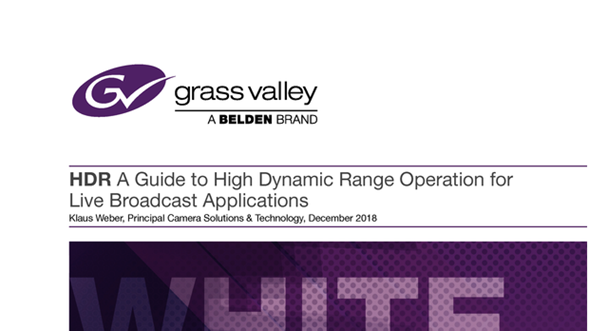Klaus Weber, Principal, Camera Solutions and Technology
The status of the different solutions for extended dynamic range operation including wide color gamut and HDR/SDR-compatible workflows and their operational aspects.
HDR is winning over consumers today because of its ability to deliver a visibly wider range of highlights and shadows, as well as more realistic color and detail. Thanks to its contrast ratio, which is much closer to the conditions found in real life, HDR allows image reproduction that is much closer to reality. Furthermore, HDR also allows more dependable results under difficult shooting conditions — such as irregular lighting or partial shade — found at many outside broadcast productions. An additional advantage of HDR is that it is fully
format-independent, and does not need any specialized viewing conditions to show its advantages.
For broadcasters and content creators, embracing an HDR workflow process raises a number of questions and poses some challenges. Most notable is the need for a parallel SDR/HDR production workflow, one where the signal can be adapted with up/downmapping as required to mix and match incoming content formats and output signals without sacrificing any quality. For example, operators may need to integrate existing SDR content into new HDR productions, or may need to send HDR content to SDR multiviewing screens in the studio. In either case, the producer’s intent for each individual signal must be maintained.


